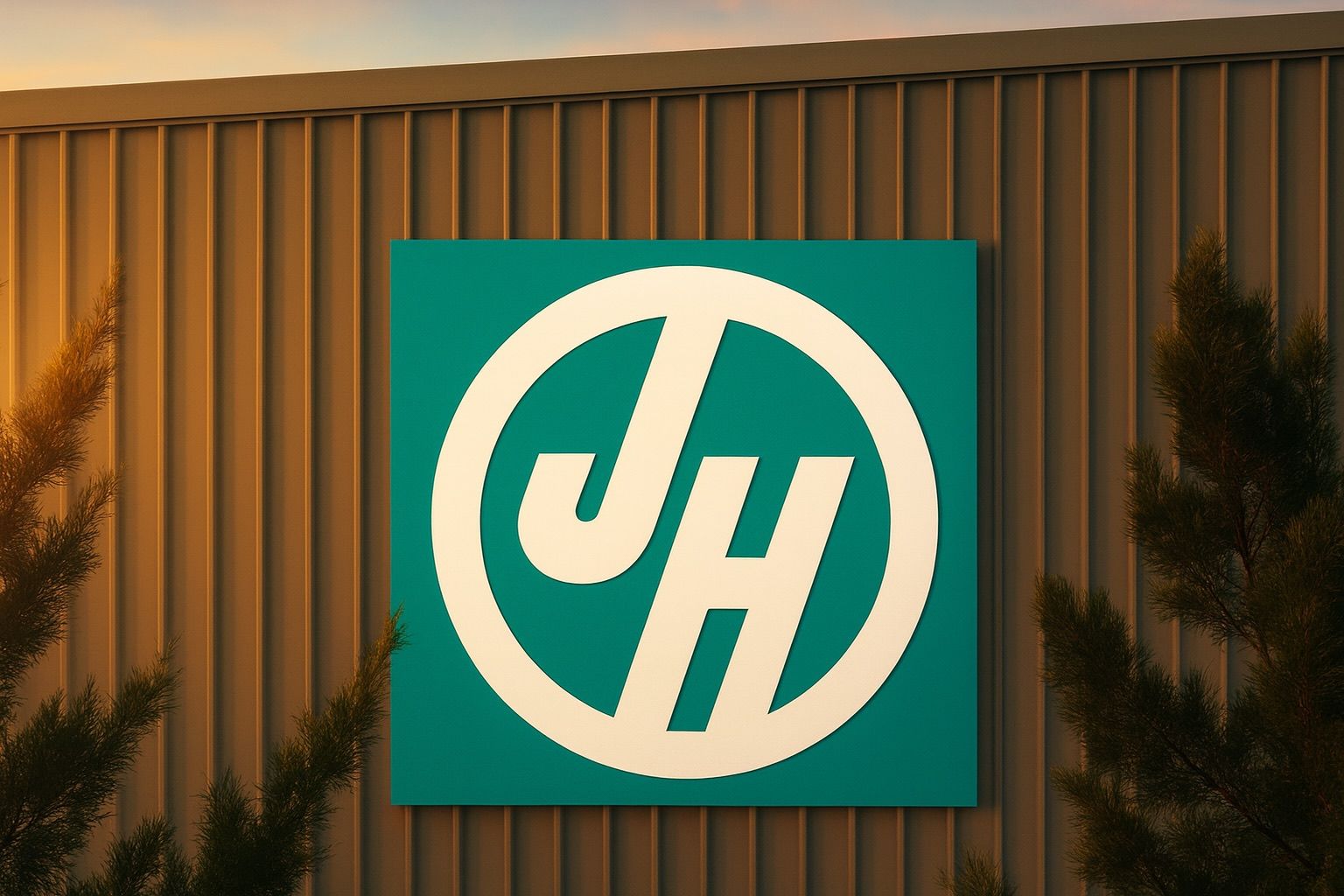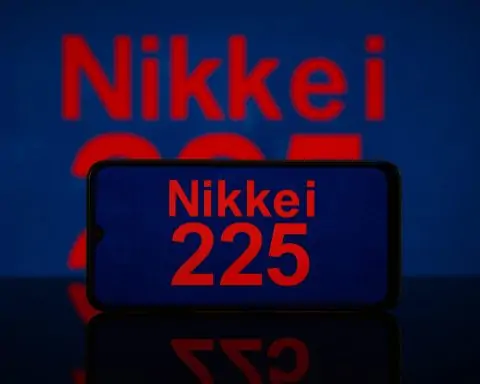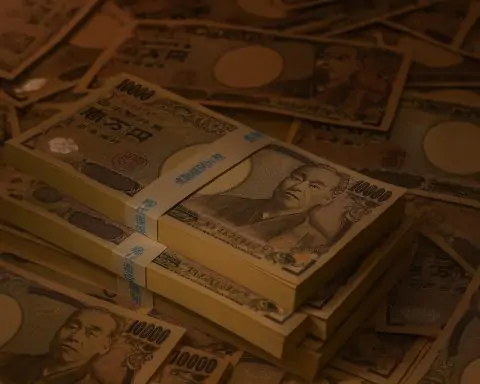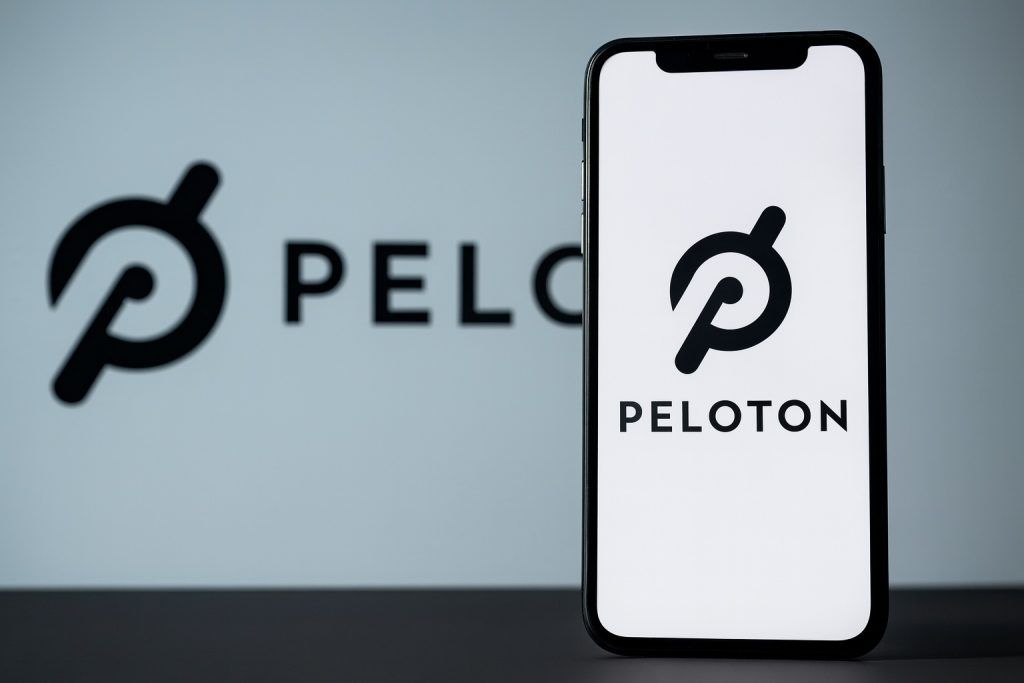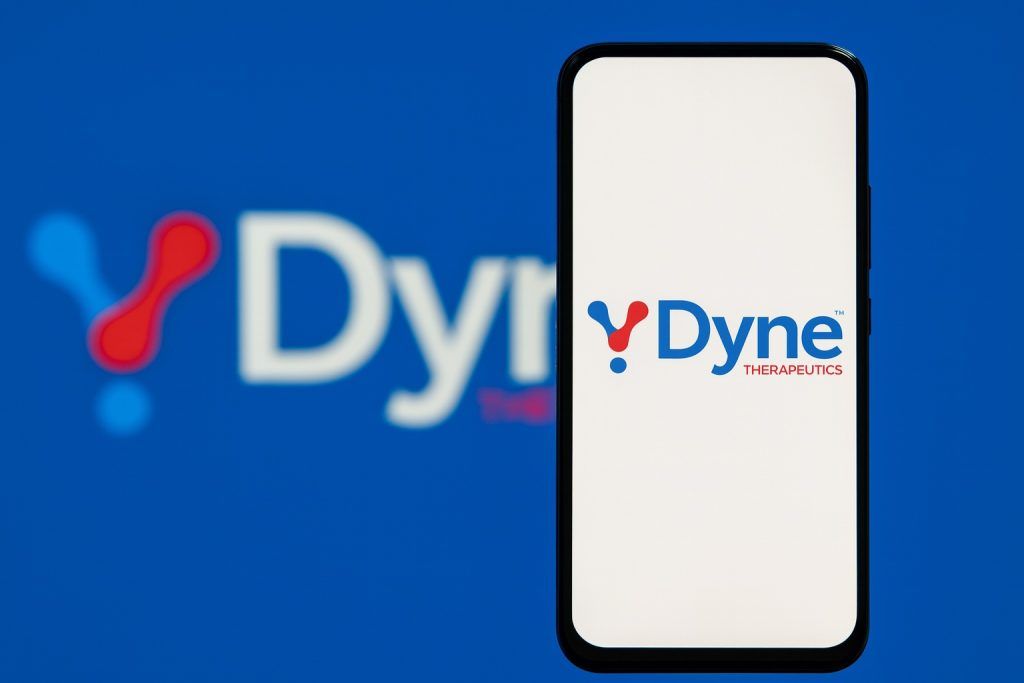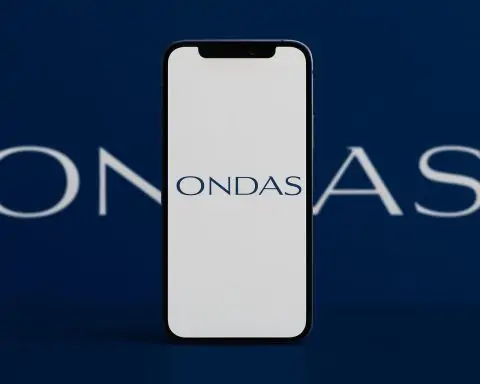- Stock Soars on Earnings News: James Hardie Industries (NYSE: JHX) shares jumped over 10% on October 7, 2025 after the company pre-released strong Q2 FY2026 results that handily beat expectations. The stock traded around $22–$23 per share following the news, up from the high-$19 range, and erasing some of the steep losses from August.
- Blowout Preliminary Results:Net sales for Q2 are projected at $1.29–$1.30 billion (versus ~$1.19B consensus), with adjusted EPS of $0.26–$0.27 (versus ~$0.15 expected). The Siding & Trim segment outperformed internal models – organic sales dipped only low-single-digits year-on-year as distributors reduced inventory less than anticipated. The new Decking & Accessories division (via the AZEK acquisition) saw mid-single-digit sales growth. CEO Aaron Erter noted these results “modestly improved” the outlook for that core siding business.
- Rebound After Summer Slump: The upbeat Q2 comes after a devastating sell-off in late August, when JHX plunged 30–34% in two days on a weak earnings forecast. In August, management warned that high interest rates and housing affordability issues were causing U.S. homeowners to defer big remodeling projects like residing, and guided full-year FY2026 operating earnings below estimates. The stock hit 52-week lows (~$18 USD) amid fears the housing downturn would be deeper and longer than expected. Now, however, investors are encouraged that demand may be stabilizing.
- Analysts Cautiously Optimistic: Despite recent volatility, Wall Street sentiment is generally positive. The stock carries a “Buy” consensus rating and an average price target around $27–$28 (≈15–25% above recent prices). Jefferies even calls James Hardie a “rare secular growth story” – citing its dominant market positions and ability to outgrow the industry – and set a Street-high $34 target. However, some analysts trimmed targets after the August drop (e.g. Baird cut from $32 to $25 while maintaining Outperform), reflecting near-term caution.
- Key Strategic Moves: In July 2025, James Hardie completed an $8.8 billion acquisition of The AZEK Company, a leading composite decking maker. This expands Hardie’s portfolio beyond fiber-cement siding into the fast-growing outdoor decking market. Early signs are positive – the new segment added growth in Q2 and integration synergies are on track. The company has also been securing multi-year supply deals with homebuilders (e.g. an exclusive siding agreement with Beazer Homes through 2028) to drive steady demand. Meanwhile, management continues to emphasize sustainability and safety: in its 2025 ESG report, Hardie highlighted a 14% cut in emissions (FY2025 vs 2021) and major waste-reduction initiatives across its global plants.
Stock Performance & Key Yahoo Finance Metrics (Oct 7, 2025)
James Hardie’s stock surged in early October on the Q2 news, climbing to roughly $22–$23 per share in U.S. trading. In Sydney (ASX: JHX), the stock similarly rebounded – though as of Oct 7 it traded around A$30 (before the Q2 announcement impact). At ~$22 USD, the company’s market capitalization is on the order of $10–$11 billion. Even after this rally, JHX remains well below its past year’s peak: the 52-week high was about $37–$38 USD, versus a 52-week low around $18. In other words, the stock is still down ~40% from its highs (after the sharp August sell-off), but up roughly 20–25% from its late-summer lows.
In terms of fundamentals, valuation multiples reflect the company’s growth profile. JHX trades at about 23–25× forward earnings (in line with peers in the building materials sector), and around 3× sales. Despite its growth investments, profitability remains strong – for instance, Jefferies noted James Hardie’s healthy gross margin of ~39% and solid liquidity (current ratio ~2.1). No dividend is currently paid (yield 0%), as the company has suspended payouts to conserve cash for expansion (more on that in ESG & Shareholder Updates below). The average analyst price target of ~$27 implies a forward P/E in the high teens, suggesting the market expects earnings to increase as housing conditions improve. Overall, the stock’s beta is moderate (~0.8), indicating it’s less volatile than the broader market – though clearly sector-specific news (like housing data or Hardie’s own guidance) can still trigger big swings.
Financial Highlights: Earnings, Revenue Trends & Guidance
James Hardie’s latest financial results paint a picture of resilience amid a housing slowdown. The company’s Fiscal 2026 Q2 (quarter ended Sept 30, 2025) results were pre-announced on Oct 7 and blew past expectations:
- Net Sales (Q2 FY26):$1.29–$1.30 billion (preliminary), which is significantly above analyst consensus (~$1.19B). This represents robust sequential growth from Q1, partly boosted by the inclusion of AZEK’s revenue. It’s not yet clear how this compares year-on-year (full details due in November), but importantly, management noted that organic sales declines were minimal in its core business despite the tough market.
- Adjusted EPS (Q2 FY26):$0.26–$0.27, crushing estimates of ~$0.15. Higher sales and ongoing cost control helped drive this earnings beat. For context, in the prior quarter (Q1 FY26, reported in August), Hardie had delivered only $0.28 of EPS (down from ~$0.39 a year earlier), with adjusted net income of $126.9M that missed forecasts. The Q2 bounce-back suggests profitability is tracking better than feared as inventory levels normalize.
- Margins & Operating Profit: We’ll get official margin figures at the earnings call, but signs are positive. Gross margin is likely still in the high-30s% range (it was ~38–39% recently), reflecting James Hardie’s ability to implement price increases even in a soft market. In Q1, North America fiber cement sales dropped 12% YoY due to volume weakness, yet the company remained solidly profitable. Hardie has been aggressively managing costs and production to match demand. Adjusted EBITDA for Q2 is guided at $326–$331 million – a healthy margin level – and the company reaffirmed it will update full-year guidance next month, potentially with an upward revision.
- FY2026 Outlook: Back in August, Hardie had guided FY26 (year ending Mar 2026) adjusted operating earnings (EBITDA) of $1.05–$1.15 billion, below prior consensus (~$1.23B). That dour forecast – essentially flat to FY2025’s ~$1.1B result – spooked investors. Now, with Q2 outperforming, there’s speculation Hardie could raise its full-year outlook. Management hinted that the siding business outlook has “modestly improved”. They will provide an official update during the Q2 earnings call on November 18, 2025. Key metrics to watch will be whether demand trends are inflecting upward and if cost synergies from AZEK start boosting margins in the second half.
- Revenue Mix and Trends: James Hardie’s growth strategy has diversified its revenue streams. North America Fiber Cement (siding & backerboard) remains the largest segment – it contributed ~$642M in Q1 FY26 sales (about 70% of global revenue), though it was down double-digits from the prior year due to the housing cooldown. The Asia-Pacific and Europe segments are smaller but stable; Hardie’s fiber cement and fiber gypsum products in those markets have seen steadier demand. Now, with the addition of AZEK, Hardie has a new Decking, Railing & Accessories segment (branded TimberTech, AZEK Exteriors, etc.). In this Q2 preview, Hardie reported mid-single-digit growth in Decking/Accessories net sales and sell-through, indicating that composite decking demand is growing despite the broader economy. This is a promising sign that the AZEK acquisition is yielding top-line growth even in year one.
Guidance and Margin Outlook: During the August conference call, CEO Aaron Erter adopted a cautious tone, citing “weaker than anticipated” single-family construction activity over the summer and persistent homeowner caution. As a result, Hardie pushed its expectation of a market rebound into calendar 2026 (their next fiscal year). The preliminary Q2 results, however, suggest some green shoots: channel inventory destocking is easing and Hardie’s customers are still prioritizing stocking its products. Erter highlighted that “our customers’ commitment to ensuring the availability of our products demonstrates the importance of our brand and strong partnerships”. In other words, distributors are reluctant to cut orders for HardiePlank siding too deeply, given its market pull – a testament to the company’s competitive moat.
Wall Street will be looking for updated full-year guidance in November. Any upward revision to the FY26 EBITDA range (currently $1.05–$1.15B) or the free cash flow outlook (Hardie had projected at least $200M FCF for FY26 earlier in the year) could further boost the stock. Conversely, if management stays conservative due to macro uncertainty, the market’s reaction could be more muted. For now, the Q2 beat has bought James Hardie some credibility back – demonstrating that it can navigate a housing slump better than feared.
Recent News (October 2025) and Catalysts
Preliminary Q2 Results Announcement – Oct 7, 2025: This was by far the biggest recent catalyst. The company’s press release (and ensuing news coverage) on Oct 7 detailed the better-than-expected quarterly numbers and an “improved outlook” for its key siding business. Investors cheered the news, sending JHX stock up double-digits in both New York and Sydney trading. Notably, James Hardie typically reports earnings later in the quarter, so this early peek at Q2 performance was somewhat unusual. Analysts interpreted it as a confidence signal – management likely felt comfortable enough with the quarter to pre-announce upside. The full earnings release and call on Nov 18 will provide more color (e.g. segment profit margins, updated guidance, and commentary on demand trends).
Analyst Upgrades and Coverage (late Sept – early Oct): In the days surrounding the Q2 announcement, we saw some analyst activity:
- Wolfe Research initiated coverage on Sept 30 with an Outperform rating and a $25 target (the low end of peers’ targets), signaling optimism on the company’s strategy despite recent volatility.
- Truist Securities and Baird both reiterated bullish ratings in August but slashed their price targets to $25 after Q1’s weak outlook. It will be interesting to see if they raise those targets again following the Q2 beat.
- On the bullish side, Jefferies (which had initiated at Buy in early August) reaffirmed its long-term view that James Hardie can outperform the market via secular growth. Jefferies’ analyst Philip Ng sees Hardie as a unique franchise in building products – a “rare secular growth story” driven by material conversion (the shift from wood and vinyl to fiber cement and composite materials). Their high $34 target implies the stock could nearly double from its recent lows.
- Market consensus as of October 7 was 10 Buy ratings, 0 Sell ratings, and a few Holds – equating to a “Buy” consensus. The average target price ~ $27.25 suggests ~15% upside from current levels. In other words, analysts broadly expect the stock to recover further as the U.S. housing cycle improves. However, that consensus target is down from mid-$30s earlier in 2025, reflecting tempered expectations after the August guidance cut.
Other News in Recent Days: Aside from earnings, news flow has included:
- Industry Conference Commentary: Company executives spoke at a recent building products conference, reiterating that inventory destocking by distributors was easing and that Hardie’s order rates were stabilizing going into Q4 (this aligns with the Oct 7 pre-release details). They also emphasized continued cost discipline and pricing strategy to protect margins (no official source cited here, but consistent with management remarks).
- Lawsuit/Investigation Headlines: In late September, a couple of U.S. law firms announced “investigations” into James Hardie on behalf of investors, related to the stock’s August plunge. (For example, class-action notices appeared after the 34% drop on Aug 20.) These types of legal announcements are fairly routine after a sudden stock decline and no specific allegations of fraud have emerged – so far it appears more of a shareholder lawsuit fishing expedition. There’s no indication of any wrongdoing by the company; the stock drop was driven by earnings guidance, not an accounting issue.
- Product & Strategy Updates: James Hardie also made news by launching a digital design tool (Hardie™ Designer) in partnership with Hover (an AI tech company) to help homeowners visualize home renovations. This is part of Hardie’s push to strengthen its marketing and brand engagement, keeping its products top-of-mind for remodeling projects. Additionally, the company announced a 3-year siding supply deal with Pahlisch Homes (a regional homebuilder) in the Pacific Northwest, expanding on similar partnerships with builders to drive adoption of Hardie siding. Such agreements help lock in future demand even as the housing market fluctuates.
Looking ahead, the next big news catalyst will be the Q2 earnings call on Nov 18, 2025, where investors will get details on Q2 financials, any revised guidance for FY2026, and management’s read on housing market conditions entering 2026. Any commentary on orders in October/November, or on how backlogs are shaping up, will be closely watched as indicators of whether the worst is over for demand. Also, any updates on synergy realization from the AZEK merger (e.g. cost savings, cross-selling opportunities) could influence analyst models and sentiment.
Expert Analysis & Commentary
Market experts have been actively debating James Hardie’s prospects, especially after the dramatic swings this year. Here are some insights from analysts and industry observers:
- Morningstar (Aug 2025): “The selloff reflects a big miss against consensus and a guidance downgrade… The market was already aware of housing weakness, but it looks like the trough is now deeper and more prolonged than originally feared.” – Lochlan Halloway, equity strategist, commenting after Hardie’s August warning. This summed up why the stock collapsed – earnings expectations had to reset lower due to the housing slowdown being worse than anticipated. However, Halloway and others also noted that Hardie’s fundamentals remained intact and that the company was simply facing a cyclical headwind.
- Jefferies (Analyst Philip Ng, Aug 8 note): James Hardie is a “rare secular growth story” with leading positions in its markets that enable it to “consistently outgrow the market” and raise prices, even in downturns. Jefferies argues that Hardie’s fiber cement siding business still has a long runway as homeowners increasingly prefer it over wood/vinyl, and that the Azek acquisition positions Hardie to similarly ride the conversion from wood to composite decking. They initiated Buy with a $34 target, seeing the post-drop valuation as very attractive.
- Baird (Analyst Tim Wojs, Aug 20): Baird kept an Outperform rating but cut its price target from $32 to $25 after Q1, acknowledging near-term challenges. Wojs’s revised target (which was near the stock’s trading price at the time) implied that “execution will be key” – Hardie needs to hit the low end of its guidance and prove the housing market isn’t deteriorating further. Baird’s stance typified the cautious optimism: still bullish long-term, but waiting for evidence of a bottom in housing demand.
- Macquarie (July 2025): Macquarie upgraded JHX to Outperform (from Neutral) around the time the AZEK deal closed. The analysts cited synergy potential and noted that Hardie’s leverage (net debt/EBITDA) should be manageable at ~3.3× by FY2026, given the strong cash flows of the combined business. They viewed the merger as creating a powerhouse in exterior building products and believed Hardie’s stock would be re-rated upward as U.S. investors appreciated its growth (especially now that Hardie’s primary listing moved to the NYSE).
- Gurufocus/MarketBeat (Oct 2025): The compiled analyst consensus shows 10 buys/strong buys out of 14 ratings, with price targets ranging from $25 (most conservative) to $34 (high). The consensus target ~$27.25 implies ~15% upside. Importantly, no analysts currently rate JHX a sell. This suggests that even with the recent troubles, most experts see James Hardie’s issues as cyclical, not structural. The overall message: Hardie is expected to weather the storm and return to growth as the housing cycle turns, though the timing of that inflection is debated.
Apart from equity analysts, it’s worth noting commentary from the building industry itself. Many contractors and homebuilders still report that James Hardie’s products remain in high demand for new projects, citing their durability and brand appeal. For example, some builders have standardize on Hardie siding in new developments as a selling point to buyers (as seen with deals like the Beazer Homes partnership). This kind of anecdotal evidence underscores Hardie’s strong competitive position – a factor frequently mentioned by analysts as a reason the company can navigate downturns better than smaller rivals.
In summary, expert opinion on JHX is broadly positive about the long-term, but with a cautious eye on the short-term housing trends. If U.S. housing starts and renovation spending pick up in 2026 (as many forecast), analysts expect James Hardie’s earnings to rebound strongly – potentially justifying those $30+ stock price targets. Conversely, if high interest rates keep strangling housing activity longer than expected, JHX could continue to lag until there’s clearer evidence of a turnaround.
Sector & Macroeconomic Context
James Hardie operates in the construction materials sector, which is highly sensitive to housing market cycles and broader economic conditions. Over the past year, several macro trends have significantly impacted Hardie’s performance:
- Housing Market Downturn: The U.S. housing market – especially new single-family home construction and big-ticket renovations – has been in a slowdown in 2024–2025. Sharply higher mortgage rates (the U.S. Fed’s rate hikes to combat inflation pushed 30-year mortgage rates to ~7%+, the highest in ~20 years) have made buying or renovating homes more expensive. As a result, demand for products like siding and decking softened. In fact, “homeowners are deferring large-ticket remodeling projects like re-siding, and affordability remains the key impediment to improvement in single-family new construction,” CEO Aaron Erter warned in August. Hardie saw this directly: U.S. new home sales data over the summer came in weaker than expected, and housing inventory hit its highest since 2007 – a clear sign of a cooled market. This macro backdrop was the primary cause of Hardie’s sales dip in Q1 and its reduced FY26 outlook.
- Inventory Destocking Cycle: Compounding the end-customer demand slowdown was a period of channel inventory correction. Hardie sells through distributors and dealers for the most part. Many of these partners found themselves with excess siding inventory as housing activity slowed, and they cut back orders in late 2024 and early 2025 to burn off stock. This “destocking” meant Hardie’s shipments fell more than end-user demand did. By Q2 2025, Hardie signaled that distributors had “recalibrated their product inventory in line with slowing demand” – essentially, the channel got closer to right-sized. The good news: in Q2 FY26, Hardie reported that distributors reduced inventory less than anticipated, indicating this headwind is easing. As inventories normalize, Hardie’s sales should more closely track actual consumer demand (which, while subdued, is more stable). This dynamic often causes sharp swings for building product suppliers around turning points in the cycle.
- Remodeling vs New Construction: About 65-70% of Hardie’s U.S. sales historically come from the repair & remodeling (R&R) market, with the rest from new home construction. The R&R segment tends to be a bit less volatile than new construction – homeowners can delay re-siding in tough times, but only for so long, and there’s a base level of replacement demand each year (for wear-and-tear, fire resistance upgrades, etc.). In 2025, remodeling activity also slowed, but not as drastically as new home building. This provided some cushion for Hardie. For example, while new housing starts were down sharply year-on-year, remodeling expenditures were roughly flat to slightly down. James Hardie’s low-single-digit organic sales dip in siding this quarter suggests the R&R demand held up reasonably well, offsetting much of the construction slump. The broader construction materials sector has seen similar trends – companies focused on home renovation products (e.g. paint, roofing repair) fared better than those tied to new builds.
- Geographic Diversification: James Hardie’s global footprint (North America ~70% of revenue, Asia-Pacific ~15%, Europe ~15%) helped diversify some risk. The housing cycles are not perfectly synchronized worldwide. The U.S. was the most challenging market in 2025 due to high interest rates. Australia (Hardie’s original market) also faced higher rates and a housing cooling, but demand for Hardie’s products in APAC has been relatively resilient (and APAC plants achieved noteworthy efficiencies, like 98% waste recycling, which lowers costs). Europe’s construction market has been slower but Hardie’s niche fiber-gypsum products there continued to grow in adoption (helped by new eco-friendly offerings like fermacell® Therm25™). In short, Hardie’s international reach provided some buffer, though the U.S. downturn was the dominant factor.
- Input Costs and Inflation: An often overlooked macro factor is raw material and energy costs. Hardie’s products use materials like cement, cellulose fibers, sand, as well as lots of energy (natural gas) in production. Earlier in 2022, inflation in materials and fuel was a headwind. By 2025, those pressures had moderated – energy costs were stable/down, and Hardie even set internal targets to cut natural gas usage (reducing emissions 14% as noted) which can also save on costs. Lower input cost inflation helped Hardie sustain its profit margins despite lower volume. This contrasts with some other building material firms that saw margins squeezed in 2022. So on the cost side, macro trends were actually turning into a slight tailwind for Hardie by late 2025.
- Construction Materials Sector Trends: The broader construction materials sector has been in a cyclical downturn through 2023–2025, but many observers believe it is approaching a bottom. Companies like Trex Co. (composite decking rival) and Louisiana-Pacific (engineered wood siding) saw their stocks tumble in 2022-2023 when housing slowed, but stabilized in 2024 and have started to recover in late 2025. There is a sense that pent-up housing demand is building: demographics in the U.S. (millennials aging into homeownership) and a multi-year under-building of homes could drive a strong housing cycle when interest rates finally ease. In the meantime, however, elevated economic uncertainty and talk of recession have kept investors skittish on the sector. Building product stocks have generally underperformed the S&P 500 over the past year. James Hardie’s own saga – soaring on pandemic housing strength, then plunging on rate-driven weakness – epitomizes the cycle. Many sector analysts argue that now might be the bottom if the Federal Reserve is near the end of tightening, but few expect a rapid rebound – more of a gradual recovery in 2026–2027.
In summary, the macro environment has been a double-edged sword for James Hardie. On one hand, the housing slump severely hit short-term demand; on the other, secular trends like material substitution (to fiber cement/composites for durability and fire resistance) continue to provide underlying growth drivers. Hardie’s ability to navigate this environment – by flexing production, maintaining pricing power, and capitalizing on any uptick in remodeling – will determine how quickly it can return to strong growth as macro conditions improve.
Competitive Landscape & Peers
James Hardie holds a commanding position in its core market of fiber-cement siding, but it’s not without competition and challenges from adjacent materials and new ventures. Here’s a look at Hardie’s competitive landscape and recent moves by peers:
- Dominance in Fiber Cement: Hardie is effectively the 90-pound gorilla of fiber-cement siding. In the U.S., the term “HardiePlank” has become nearly synonymous with fiber-cement siding (much like “Trex decking” for composites). The company is estimated to command roughly 90% market share in the fiber-cement category. This category itself makes up about 20% of all siding used in U.S. homes (the rest being vinyl, wood, stucco, etc.). Hardie’s nearest competitors in fiber-cement are small regional players – no other publicly traded company has significant share. This oligopoly-like position allows Hardie considerable pricing power and scale advantages. Its main challenge in siding isn’t a direct competitor so much as the alternative materials: Vinyl siding (made by firms like CertainTeed and Ply Gem) is cheaper upfront, and engineered wood siding (offered by Louisiana-Pacific Corp.) pitches itself as easier to install. Hardie has been taking share from both over the years by touting fiber-cement’s superior durability, fire resistance, and aesthetics. This “material conversion” trend – homeowners choosing fiber-cement over wood/vinyl – is a key pillar of Hardie’s growth story. Even in 2025’s down market, Hardie was able to raise its prices modestly, showing confidence in its value proposition.
- Expansion into Composite Decking (AZEK vs Trex): With the acquisition of AZEK, James Hardie stepped into a new arena – composite decking, railing, and outdoor products. This pits Hardie against Trex Company (NYSE: TREX), the long-standing leader in composite decking. According to industry data, Trex holds about 50% market share in composite decking, while AZEK (now Hardie’s division) has roughly 35%. Together, these two giants dominate an industry that is steadily displacing traditional wood decking. Trex is often dubbed the “Kleenex of composite decking” due to its brand recognition, but AZEK’s TimberTech brand is a strong #2 with a premium product image (more wood-like appearance, etc.). Notably, the composite decking market itself has huge growth potential: it’s only ~24% penetrated (i.e. ~24% of all new decks use composites vs wood), and research suggests that could double over the next 10-15 years as consumers shift to low-maintenance, eco-friendly materials. By acquiring AZEK, Hardie has positioned itself to ride this secular trend alongside Trex. Early evidence: Hardie reported growth in its Decking segment this quarter despite a soft economy, hinting that the outdoor living category may be more resilient. We’re also seeing innovation and competition heat up – e.g. Trex recently launched cheaper product lines to capture more value-conscious buyers, and both Trex and AZEK tout their use of recycled materials as a sustainability edge (Trex even recycles plastic bags at massive scale). So far, analysts view Hardie’s foray positively, noting the combined company will have “peer-leading profitability” and growth prospects. Execution will be key: Hardie must successfully integrate AZEK’s operations and culture, and continue capturing share without igniting a price war with Trex.
- Other Competitors & Peers: In the broader building materials space, James Hardie’s peers include companies like LP Building Solutions (LPX), which makes engineered wood siding (LP SmartSide) and OSB panels, and Masonite (DOOR), which makes doors and siding accessories. However, none match Hardie’s specific focus on fiber cement technology. There are also regional players in cement boards (e.g., Allura in the U.S.), but some have struggled – for instance, CertainTeed (a vinyl siding maker) tried entering fiber cement years ago but exited after quality issues. Hardie’s scale and decades of process know-how in fiber cement have proven hard to replicate. Internationally, Etex in Europe is a competitor in fiber gypsum boards, but Hardie is actually a leader in that niche too via its Fermacell product line. The competitive landscape is also shaped by substitute products: e.g., if brick or stucco is popular in a region, siding share is lower. Hardie has less exposure in those markets (for example, much of the U.S. south opts for brick exteriors; Hardie’s share there is lower than in markets like the Midwest where siding rules). The company counters this by developing new products and finishes – e.g., the Hardie™ Architectural Collection offers modern panel designs to compete with stucco styles.
- Innovation and New Entrants: An important aspect of competition is product innovation. Hardie spends significantly on R&D for new textures, colors, and improvements to installation. In 2025 it launched the TimberHue™ collection, featuring wood-look multi-tone finishes on fiber-cement planks, to capture homeowners who want a natural wood aesthetic without the upkeep. Such innovations keep Hardie ahead of imitators. Meanwhile, in decking, both AZEK and Trex invest in tech to make boards cooler (to touch in hot sun), more scratch-resistant, etc. We’re also seeing startups and smaller firms pushing alternative materials (for instance, fiber-composite hybrids, or new recycled-material sidings), but so far none have made a big dent in Hardie’s domains. The company’s strong brand recognition and established distributor network give it a moat.
- Peer Performance: It’s useful to note how peers have performed recently: Trex stock, for example, had plummeted in 2022 when decking demand fell, but has since recovered some as inventory destocking ended. Trex’s latest earnings (summer 2025) showed a return to growth, which bodes well for AZEK/Hardie too. LPX had a tough 2023 due to low OSB (sheathing) prices, but its SmartSide siding unit grew, highlighting that siding (including Hardie’s fiber cement) is taking share from other exteriors even in a weak market. In short, the competitive environment remains tough but rational – major players are not dumping product or undercutting prices dramatically; instead, they’re focusing on innovation and waiting out the downturn. James Hardie’s move to become a more diversified “one-stop exterior solutions” provider (siding, trim, decking, etc.) via AZEK could put pressure on narrower competitors and give it cross-selling advantages with builders. We may see some competitive responses, such as Trex expanding into siding (unlikely) or others consolidating. So far, Hardie’s bold AZEK acquisition stands out as the biggest competitive shake-up of 2025 in this sector.
To sum up, James Hardie’s competitive position is quite strong. It’s the leader in its core category and now a solid #2 in a related high-growth category. The main threats are macro-driven (demand swings) and the perennial need to stay ahead of alternative materials. If Hardie continues to invest in product innovation and leverage its brand power, it is poised to keep (or even extend) its lead as the housing cycle improves.
ESG & Shareholder Updates (Sustainability, Insider Trading, Dividends)
In addition to financial performance, James Hardie has been active on environmental, social, and governance (ESG) fronts and other shareholder-related matters:
Sustainability Initiatives: James Hardie released its 2025 annual Sustainability Report, titled “Building Resilience,” in August 2025. The report highlights the company’s progress on several ESG pillars:
- Climate and Emissions: Hardie reduced its Scope 1 and 2 greenhouse gas emissions by 14% in FY2025 (vs a 2021 baseline), thanks to efficiency projects and setting internal energy reduction targets in each region. For example, plants optimized their use of natural gas and explored alternative energy sources.
- Circular Economy & Waste Reduction: The company made strides in waste recycling – in North America, over 11% of manufacturing waste in FY2025 was diverted from landfills (recycled back into production), and in Asia-Pacific an impressive 98% of waste material was kept out of landfills by recycling or repurposing it. These efforts not only cut environmental impact but also lower material costs.
- “Zero Harm” Safety Program: Hardie is investing $75 million over three years in advanced safety infrastructure and training worldwide. They implemented stricter standards for energy control, machine guarding, working at heights, electrical safety and more, with independent audits to ensure compliance. This is crucial given the industrial nature of fiber-cement manufacturing; the company’s goal is to reduce injury rates and protect workers (“Zero Harm”).
- Product Innovation for Sustainability: Many of Hardie’s new products have sustainability angles. The fermacell® Therm25™ flooring in Europe, for instance, uses recycled gypsum and has lower CO2 footprint than traditional options. In the U.S., Hardie’s fiber-cement was recognized as a green choice – Hardie Artisan Trim won a 2025 Sustainable Product of the Year award from Green Builder Media. Fiber-cement is prized for being non-combustible (important in wildfire-prone areas) and durable (less frequent replacement).
- Social & Governance: The report also notes Hardie’s first global Human Rights Policy rollout and supplier compliance audits, ensuring ethical labor practices in its supply chain. On governance, James Hardie has an independent board chaired by Anne Lloyd (as of 2025), with a focus on diversity and accountability.
All these ESG efforts show James Hardie positioning itself as a sustainable building materials leader – an important message for environmentally conscious investors and customers. The company ties this to its mission of “Building a Better Future for All™”. From an investor standpoint, strong ESG performance can help attract ESG-focused funds and mitigate risks (like regulatory or reputational risks). It’s also worth noting that Hardie’s products (siding, decking) can contribute to greener homes (due to longevity and insulating properties), which is a selling point as green building becomes more prominent.
Insider & Institutional Trading: According to public filings, there have been no significant insider (management or director) share purchases or sales reported in recent months. The lack of insider selling during the stock’s turmoil could be viewed as a vote of confidence by management in the long-term value. Additionally, on the institutional side, some large investors have been increasing their stakes. Notably, Wellington Management Group, a well-respected asset manager, disclosed a new position of roughly $90.5 million in JHX during the first quarter of 2025. This made headlines as a substantial holding notice, suggesting that Wellington saw the post-AZEK-merger Hardie as an attractive investment. Other institutions, like BlackRock and Vanguard, remain among the top shareholders, as is typical for a company of Hardie’s size. Overall, the shareholder register is dominated by long-term institutional investors, many of whom likely rode through the recent volatility. We haven’t seen activist investors or hostile moves – the company’s trajectory seems supported by patient capital betting on a housing recovery.
Dividend Policy: James Hardie historically paid biannual dividends, but dividend payments have been suspended in recent years. In fact, the Board halted dividends in November 2022 (during the period of the AZEK merger planning) and none have been declared since [1]. Management decided to conserve cash to fund growth opportunities and maintain balance sheet flexibility. This continued a prior pause initiated during the 2020 COVID downturn. As a result, JHX’s dividend yield is currently 0%. For income-focused investors, this is a drawback; however, the company indicated it will revisit capital returns once leverage comes down post-acquisition and if business performance improves. Hardie has been prioritizing debt reduction (net debt stands at about $4.5 billion as of Sept 30, after financing the AZEK deal through a combination of debt and equity). The target is to get leverage down to ~3x EBITDA in the near term, which is reasonable for this industry. We might see dividends reinstated in a couple of years, or possibly share buybacks, if cash flows bounce back. For now, the official word is that the dividend remains suspended “until further notice.” Investors shouldn’t count on a payout in the immediate future, but this discipline is arguably in shareholders’ long-term interest as it enables the company to invest in integration and growth.
Governance and Other Updates: On the corporate governance front, James Hardie underwent a major leadership change in late 2022 (bringing in CEO Aaron Erter). Under Erter’s leadership, the focus has been on operational excellence and strategic expansion (the AZEK deal being a signature move). The board’s oversight during the merger drew some scrutiny in Australia – there was a minor controversy with the ASX (Australian Securities Exchange) calling for a review of M&A rules, as some investors initially balked at the size of the AZEK deal. However, that seems to have settled, and shareholders approved the merger overwhelmingly. Hardie’s incorporation in Ireland (it’s an Irish plc) and primary listing shift to NYSE means it operates under U.S./global governance standards, and it reports in USD. The company is in compliance with required financial reporting (it files 20-F/6-K reports to the SEC, etc.), and there haven’t been any governance red flags reported.
In terms of insider sentiment, while we noted no big insider trades, it’s worth mentioning that management’s incentives are aligned with performance – e.g., short-term bonuses were paid at 1.5× target for FY25 due to strong performance that year, but likely took a hit in FY26 given guidance cuts. This suggests leadership is rewarded for growth and profitability, which should motivate them to get the company back on track quickly.
Community and Reputation: James Hardie has a long history (including legacy issues like asbestos in the 20th century), so ESG isn’t just lip service – the company has worked to rebuild trust and demonstrate responsibility. For example, they engage in community building initiatives and emphasize that their products (being durable and fire-resistant) contribute to safer homes. While not a direct financial metric, having a positive reputation and fulfilling social responsibilities helps Hardie maintain its license to operate and brand loyalty among customers and contractors.
Bottom Line: As of October 7, 2025, James Hardie Industries plc stands at a pivotal moment. The company has navigated through a housing slump-induced setback and appears to be on the upswing again with a big Q2 earnings beat. Its stock, while still below past highs, is recovering as confidence returns. Hardie’s bold moves – like the AZEK acquisition – and its continued innovation in sustainable, high-performance building products position it well for the future. Analysts see significant upside if the housing market finds its footing, and the lack of any fundamental cracks in the company’s strategy or finances bodes well. Investors should keep an eye on macro indicators (interest rates, home sales), Hardie’s upcoming earnings/guidance updates, and how effectively the company continues to integrate AZEK and execute on its growth initiatives. In the cyclical world of construction materials, James Hardie is aiming to prove that its franchise can not only withstand the storm, but emerge stronger when the clouds clear.
Sources:
- Yahoo Finance – JHX stock quote & summary (October 2025)
- James Hardie Industries – Preliminary Q2 FY2026 results press release
- Investing.com – “James Hardie stock soars after strong Q2 results beat estimates”; Jefferies analyst coverage [2]
- Reuters – Aug 20, 2025 report on JHX outlook cut and stock plunge; Sector context
- Benzinga – “Why Is James Hardie Stock Surging Tuesday” (Oct 7, 2025) [3]; Analyst price target roundup
- Canopy Investors (Bennelong) – Insight on Hardie–AZEK merger and decking market share (Mar 2025)
- James Hardie 2025 Sustainability Report Highlights
- GuruFocus/MarketBeat – Analyst rating updates (Aug–Sept 2025)
- Company Investor Relations filings – Dividend suspension notice [4] and financial data.
References
1. www.sec.gov, 2. www.investing.com, 3. www.benzinga.com, 4. www.sec.gov
